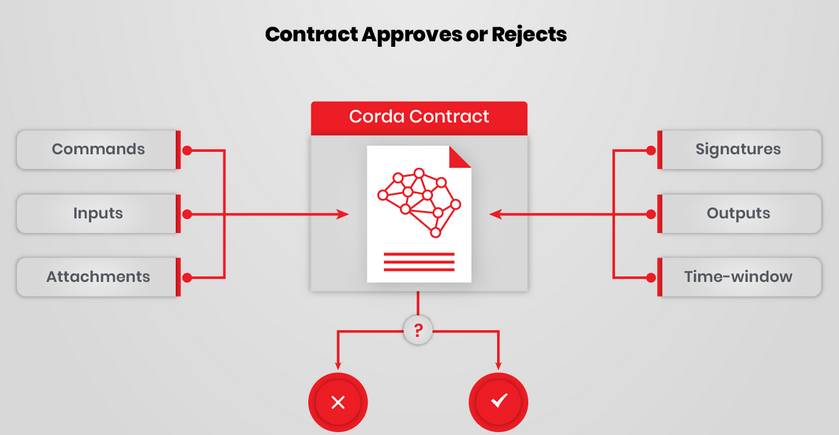About DLT Technology
Corda Enterprise from R3.
Private, restricted DLT.
When designing a solution within the Corda system, the following solution elements are used, among others:
- State
An immutable object that contains data representing some fact. The content is immutable in the sense that the current state is always maintained, and when changed, the previous state is moved to history. A particular State (object) is not necessarily known to every DLT blockchain node, its distribution can be controlled. Thus, within the nodes of a DLT system, there may be not one common ledger, but a system of ledgers in which different nodes participate.

- Contract
It represents an agreement, an anxiety about how and under what conditions a State can be created or changed. A contract can thus validate the transition from one State to another. This change is typically implemented within a transaction.

- Command
Command represents a way to go from an input State to an output State within a Contract. It also specifies who must sign (approve) such a transition.
- Transaction
Transaction consumes input State and creates output State. It uses a Contract and its Command to do this. A Transaction is atomic, so it is either implemented or rejected as a whole. Transactions can be chained.
- Flow
Flow represents the level of the business process where several steps are coordinated so that the participants reach a consensus on changing the States of the Contracts involved in the transaction. See the following figure.

More about Corda-based DLT: Corda Enterprise 4.X